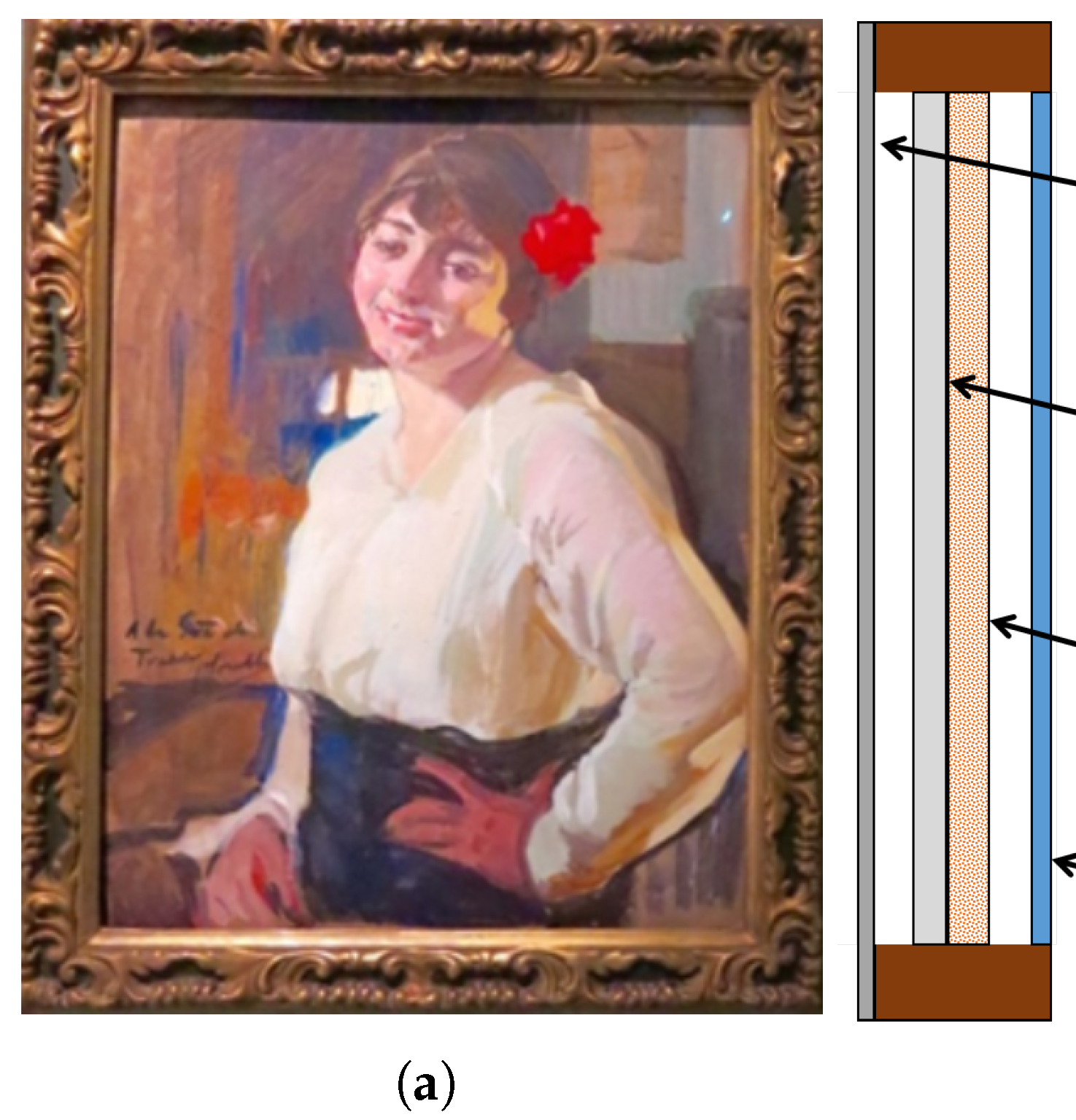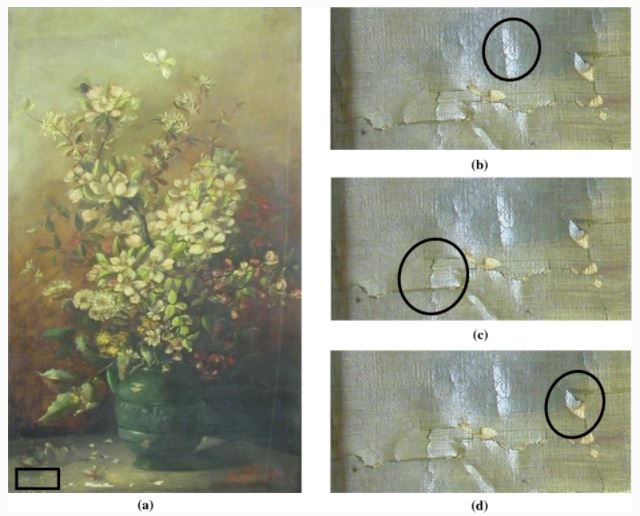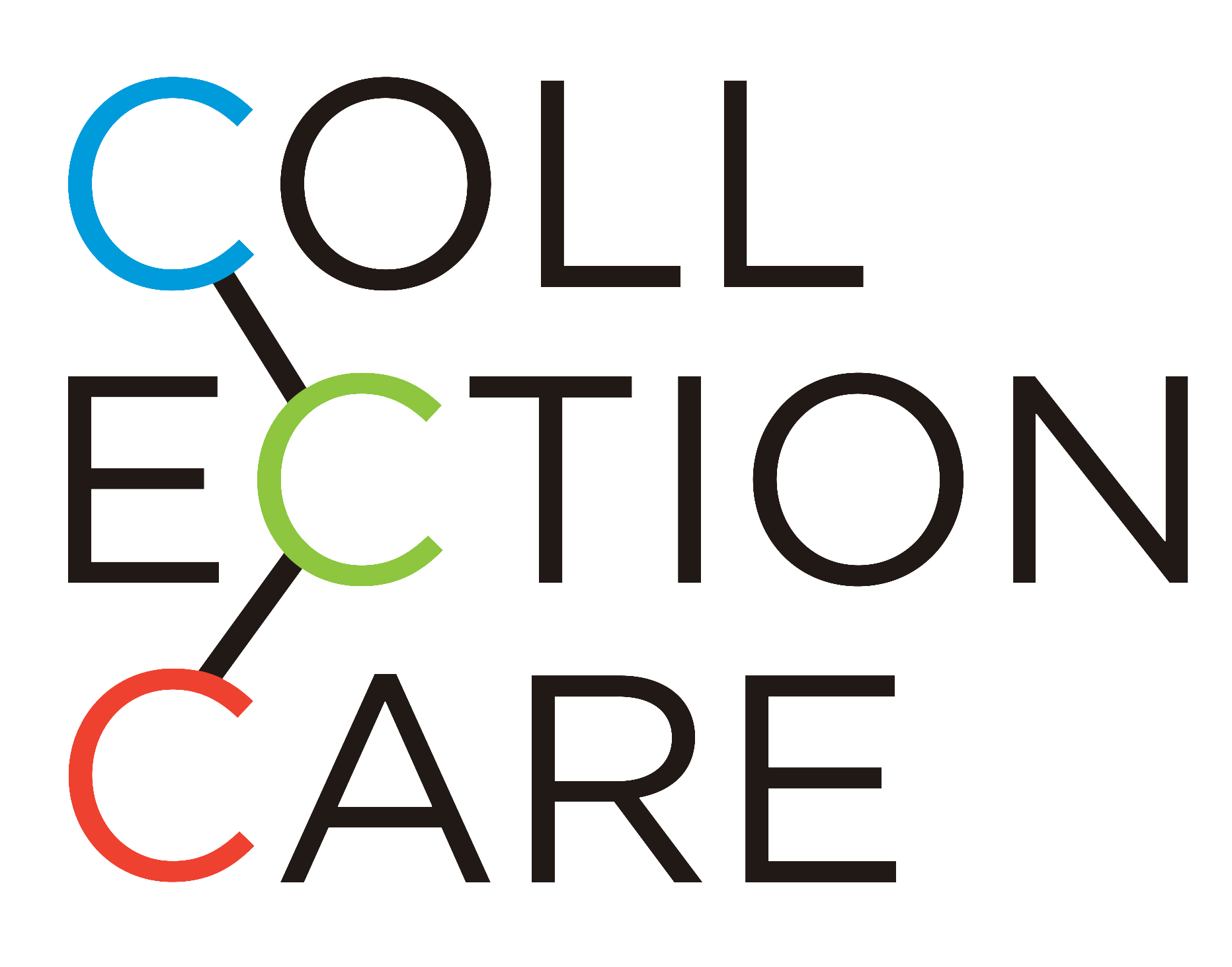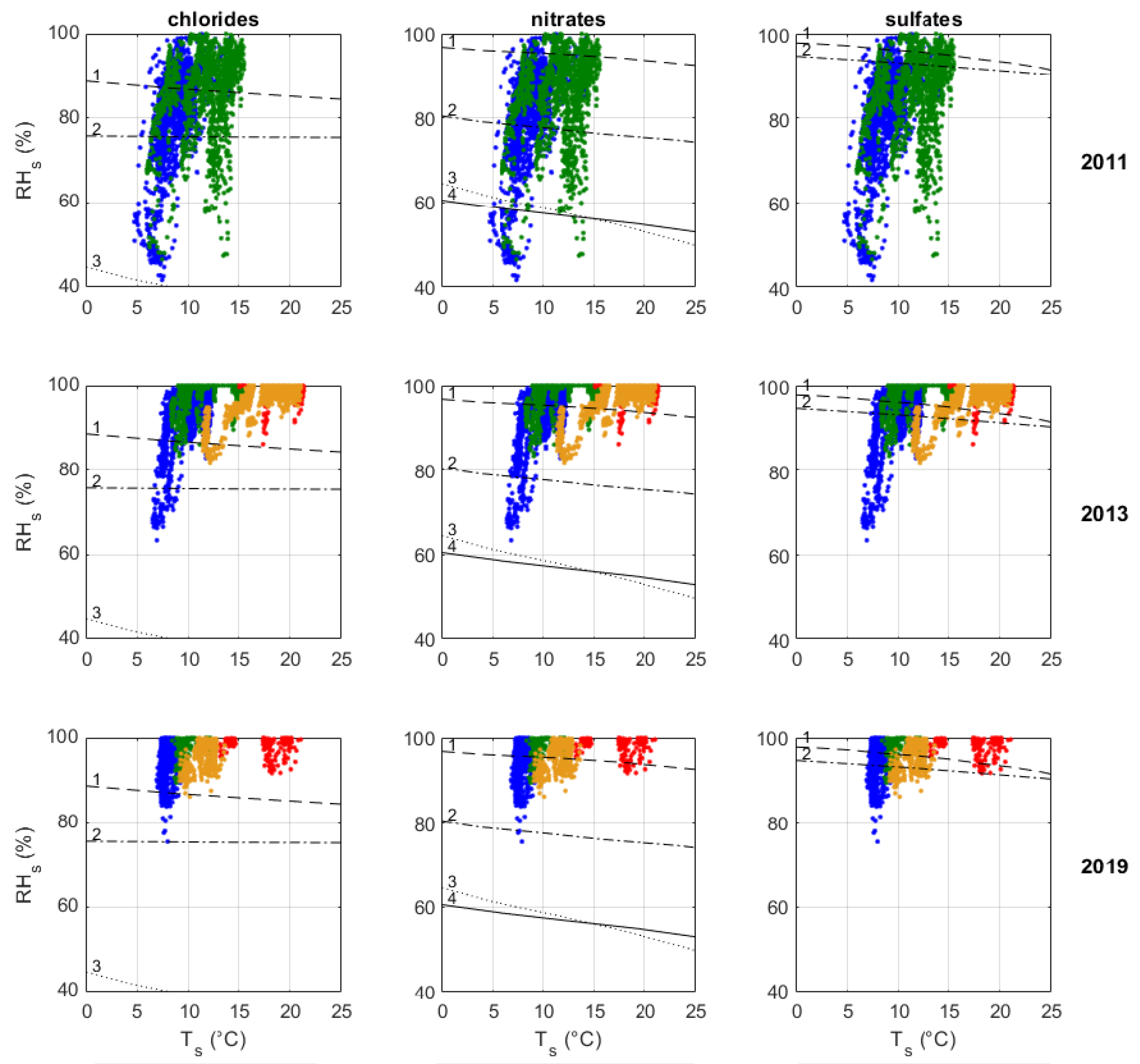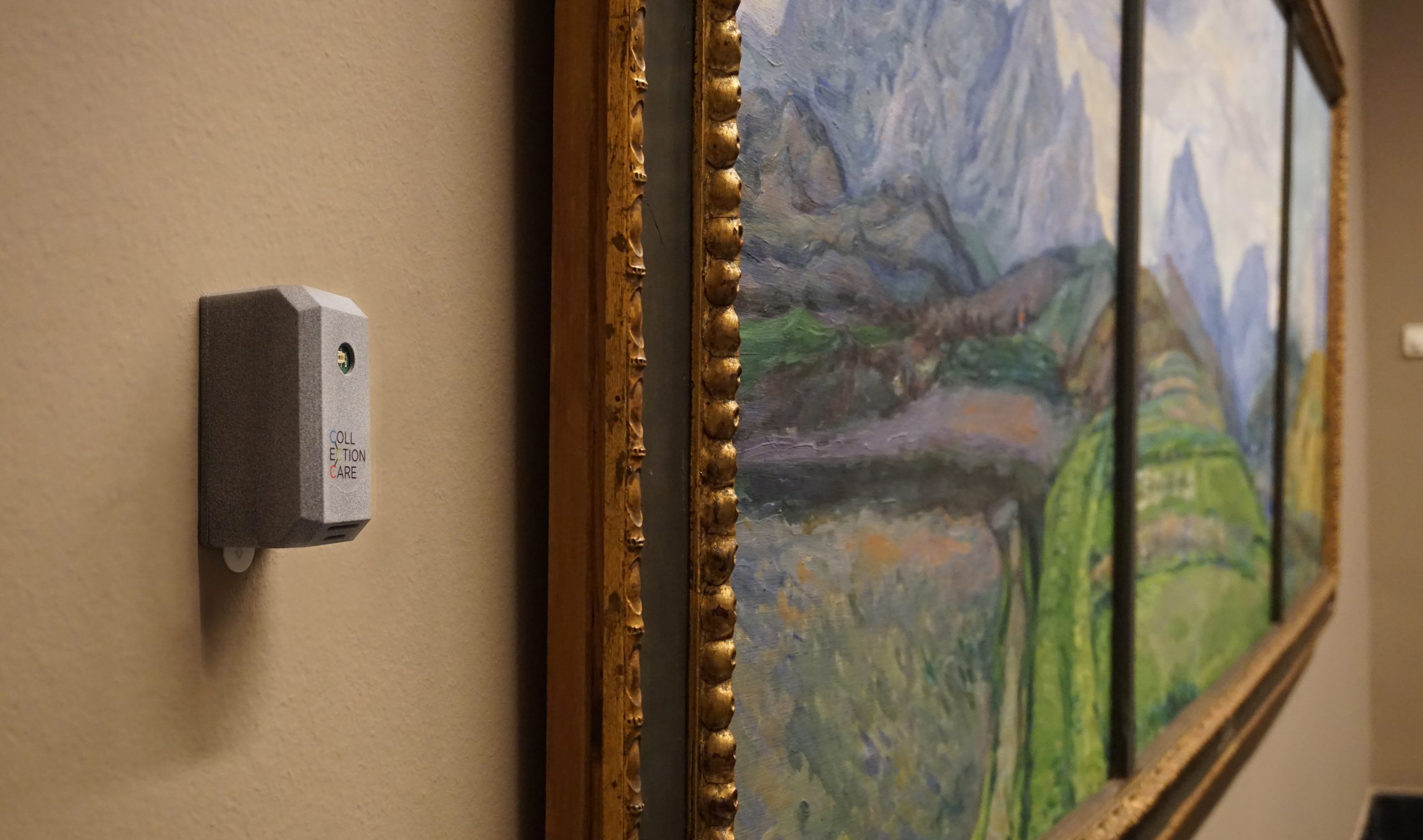
Project facts
Presentation
Introduction
The concept of Preventive Conservation (PC) of a cultural artefact is based on mitigation of the deterioration or damage due to material ageing and biological, mechanical and chemical degradation processes over time.
The degradation of an artefact depends on the environmental conditions to which it is exposed, such as temperature (T), relative humidity (RH), light (L), air pollutants (AP) – either gases such as NO2 (nitrogen oxides), SO2 (sulphur dioxide) and O3 (ozone) or particulate matter – and vibrations (V) and their synergies.

Cultural artefacts gradually adapt to the environment over time if it is maintained constant. However, their degradation rate increases considerably when they are exposed to short-term or seasonal environmental conditions (fatigue behaviour), as the effects on an artefact are cumulative in time.
These changing environmental conditions are often the result of moving artworks between exhibitions, from exhibitions to storage and vice versa, or during transport for institutional loans to temporary exhibitions.
In addition, cultural artefacts can be made of wood, metal, textile, canvas, paper, ceramic, stone or glass among others, and a large number are made with a combination of these different materials. Since each material has specific reactive behaviour as a function of environmentally-induced stresses and degradation kinetics, there is a vast heterogeneity in terms of physical and material behaviour of artefacts.
So, for an effective PC of cultural artefacts, it is essential to consider the historic environmental stress and degradation kinetics of their different materials (and their synergies) and monitor the artefact at all times. However, due to the complexity and heterogeneity of the material nature of the artefacts, this requires expensive monitoring and control equipment as well as specialised personnel; out of reach for most small to medium-sized museums and collections.
The CollectionCare System
The CollectionCare project, a European Commission Horizon 2020 funded initiative, aims to develop an innovative PC decision support system targeting the needs of small and medium-sized museums and collections. It will integrate current research and technological advances in monitoring systems (sensor nodes), wireless communications, bid data, cloud computing and material and multi-material degradation models into a single affordable system.
This way, the CollectionCare system will be able to monitor the environmental conditions of each artefact individually at any place (on display or in storage, handling or transport), provide degradation predictions of multi-material cultural artefacts and offer suitable recommendations for their proper conservation.
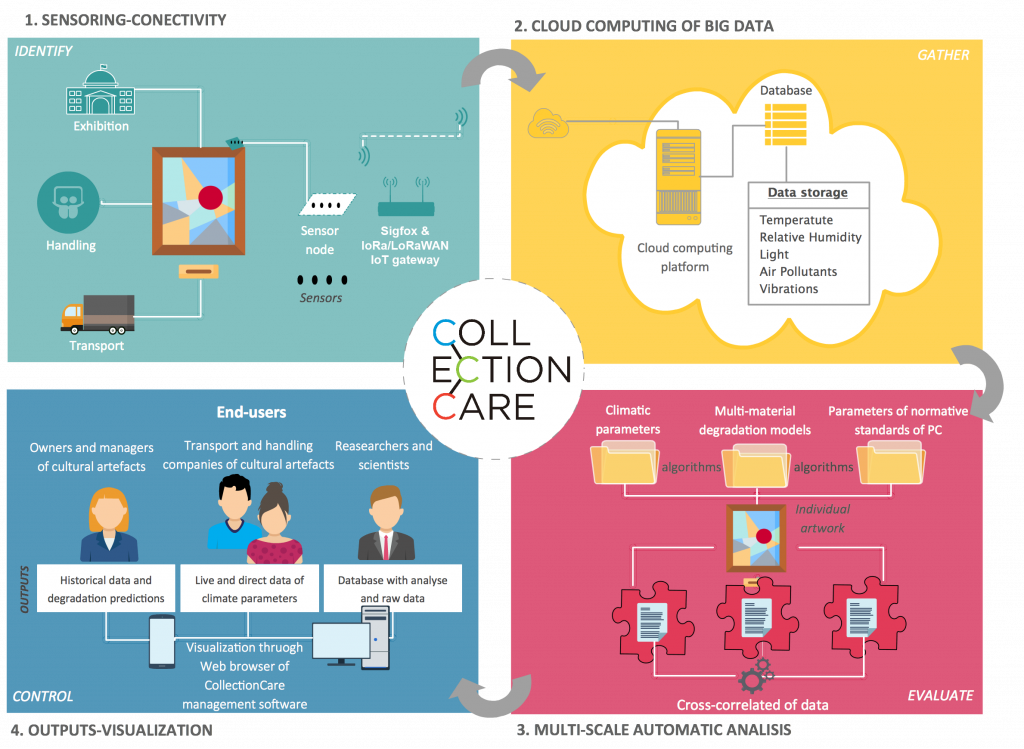
- To begin with, the CollectionCare system will monitor the environmental conditions with a low-cost wireless sensor node that will be attached strategically in the room, on the cultural artefact or nearby.
- The data collected by the sensors will be transmitted to a cloud computing platform for Big Data using LPWAN technologies.
- Then, the recorded data will be automatically stored, analysed and crossed in the cloud with advanced multi-material degradation models, as well as with the European Strandards and Guidelines parameters to evaluate those data.
- Later, CollectionCare system will provide degradation predictions for multi-material cultural artefacts, alarms and appropriate recommendations for preventive conservation to control and minimise their degradation, thus ensuring their preservation. This can be viewed through the CollectionCare management software web browser.
This way, CollectionCare will provide an affordable, adaptable and versatile solution for preventive conservation of movable artworks, targeting the needs of stakeholders such as small to medium-sized museums, art galleries, libraries, archives, private collections, transport, storage and handling companies, art management software companies and insurance companies specialising in art.

CollectiveCare specific objectives
- Development of low-cost, low-power, real-time system
- Optimisation of current air pollution sensing system to a miniaturised and real-time wireless sensor node.
- Development of a gateway service
- Optimisation of wireless communication systems
- Development of a cloud-based architecture big data system
- Integration and tailoring of the existing degradation models
- Integration of the different components developed through the specific objectives into the CollectionCare systems and demonstrating it as a service in museums.
Impacts & Results
Expected impacts
- Practical and affordable tools/solutions in terms of cost and complexity. Cost reduction of a least 50% comparedto existing solutions.
- Improved compliance with Preventive Conservation (PC) recommendations, without a negative impact on the budget presently available for PC, in particular for end-users such as small and medium sized museums.
- Improved CH degradation predictions and modelling-based decision-making with regard to the choice between preventive and remedial conservation measures.
- Effective market uptake across Europe from the proposed solution in the Cultural Heritage market and beyond.
- Contribution to open repositories of simulation/experimental/measurement data.
- Contribution to an increased citizens’ awareness of Preventive Conservation of tangible Cultural Heritage.
Results
- Publications: collectioncare.eu/publications
- Press & News: collectioncare.eu/news
- Newsletter: suscription to the CollectionCare Newsletter
- Reports: collectioncare.eu/work-packages
Documents

